A lot can be said about the infamous Roman Emperor, but in this post, we have created the ultimate list of the top 10 interesting facts about Nero.
1. He became the youngest-ever Roman Emperor
Nero was born “Lucius Domitius Ahenobarbus” on December 15, 37 A.D. in Antium, a city about 51 kilometers (32 miles) south of Rome.
His mother was Agrippina the Younger and was the sister of the equally infamous Roman Emperor Gaius Julius Caesar, better known as Caligula, who reigned over the empire from 41 to 37 A.D.
Nero was also the great-great-grandson of the first emperor of the Roman Empire, Augustus, from his only daughter Julia.
Hi real father, Domitius, died when Nero was just 2 years old in January of the year 40 A.D. Claudius, another member of the Julio-Claudian dynasty, became emperor after Caligula was assassinated in the year 41 A.D. and adopted Nero as his own son.
Nero became the only successor to the throne and because Nero’s mother, Agrippina the Younger, wanted to see her son become the new emperor, she allegedly poisoned Claudius in the year 54 A.D.
On October 13, of the year, 54 A.D., Nero became the youngest-ever Roman Emperor. He was just 16 years old, just over 2 months shy of his 17th birthday.
He would reign for 13 years and 8 months until his suicide and be eventually replaced by Vespasian (after 3 unsuccessful attempts by others in the Year of the 4 Emperors following Nero’s death) who formed the Flavian Dynasty, known for their construction of the Flavian Amphitheater or The Colosseum.

2. He had his own mother killed
Nero’s mother, Agrippina the Younger, prepared for her son to become emperor in her own ways. She first poisoned her first husband so she could become the wife of Emperor Claudius, she then subsequently poisoned Claudius in 54 A.D. and later on, his son and rightful heir to the thrown Brittanicus in 55 A.D.

She then quickly had Nero proclaimed emperor by the Praetorian Guard with whom she had an accomplice to easily make this happen.
To say that Nero’s mother was a wicked woman is an understatement!
One of the most interesting facts about Nero is that he didn’t start his reign with the erratic behavior that would eventually define his rule.
Up until the year 59 A.D., he actually behaved quite the opposite with acts of generosity and clemency such as the reduction of taxes, the ban on bloodshed in arenas, and the banning of capital punishment.
This didn’t last though and it’s believed, according to historian Tacitus, that the meddling of his mother in his personal life, including his affair with Poppaea Sabina, drove him to have his mother killed in the year 59 A.D.
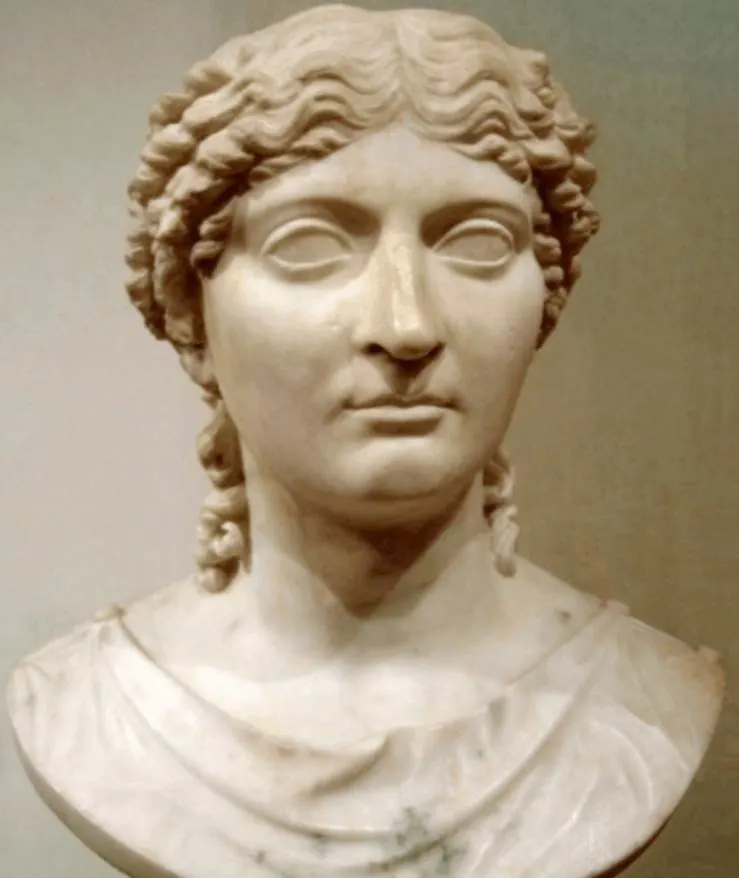
3. He probably killed his second wife as well
Nero married his own stepsister, Claudia Octavia, on June 9, 53 A.D. This didn’t mean that Nero didn’t have any affairs though, as he first had one with a freedwoman called “Claudia Acte,” and later on with the daughter of Roman Senator (and later Emperor) Otho, “Poppaea Sabina.”
When Nero started an affair with Poppaea, he divorced his wife and banned her from Rome. He claimed she was barren and he went on to marry Poppaea, who was pregnant with their first child, 12 days after the divorce was completed in 62 A.D.
The marriage didn’t end well for Poppaea. When she was pregnant with their second child, Nero apparently flew into a rage while they were quarreling over some trivial things (like all married couples do now and then) and kicked her so hard in the stomach that she died.
The exact time of her death and the cause can’t be verified though, and many modern historians leave the option that Poppaea died during giving birth open as well.

4. He went off the rails after his mother’s death
Most historians agree that Nero’s rule completely changed after his mother had died, most probably at his own orders.
Apart from completely losing grip on reality and trying to acquire praise by publicly conducting the strangest performances imaginable, he also lost his sense of right and wrong.
And there was nobody that could stop this, as he was the emperor. This resulted in peculiar performances as an actor, a singer, and even performances in sports and gladiator games.
Obviously, Nero was always the winner and often paraded through the streets of Rome with the trophies he had just won in his fake games.
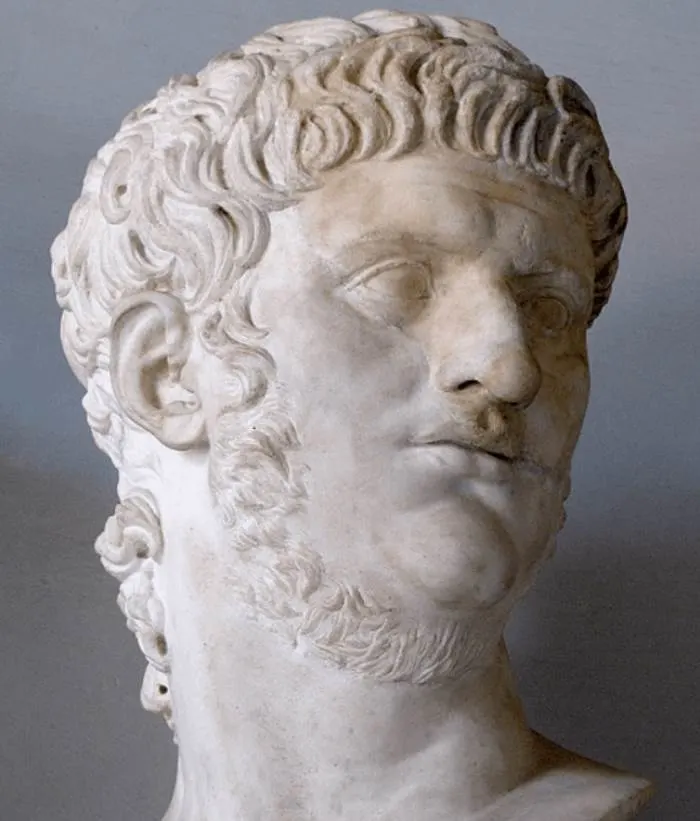
5. He castrated a boy so he could marry him
Shortly after Nero allegedly killed Poppaea, he remarried a woman named Statilia Messalina, who was apparently a descendant from a successful Roman general and much less of a pubic figure than her two predecessors.
One of the weirdest facts about Nero is that he didn’t seem to be able to let go of Poppaea after her death. One day, he met a boy named “Sporus” who appeared to have a striking resemblance to Poppaea.
At least in the eyes of Nero because he sent out his troops to find the boy, ordered the boy to be castrated, and married him to become his “wife.”
This wasn’t just a secret thing as well, the wedding party was just as big as any of his previous marriages and the ceremony and rituals were just the same as well. Sporus went on to live with Nero as his wife afterward.
After Nero died, Sporus found himself in the hands of his successors, and eventually committed suicide before Emperor Vitellius (the last “temporary emperor” before Vespasian) could use him in a brutal re-enactment of the Rape of Proserpina at a gladiator show.
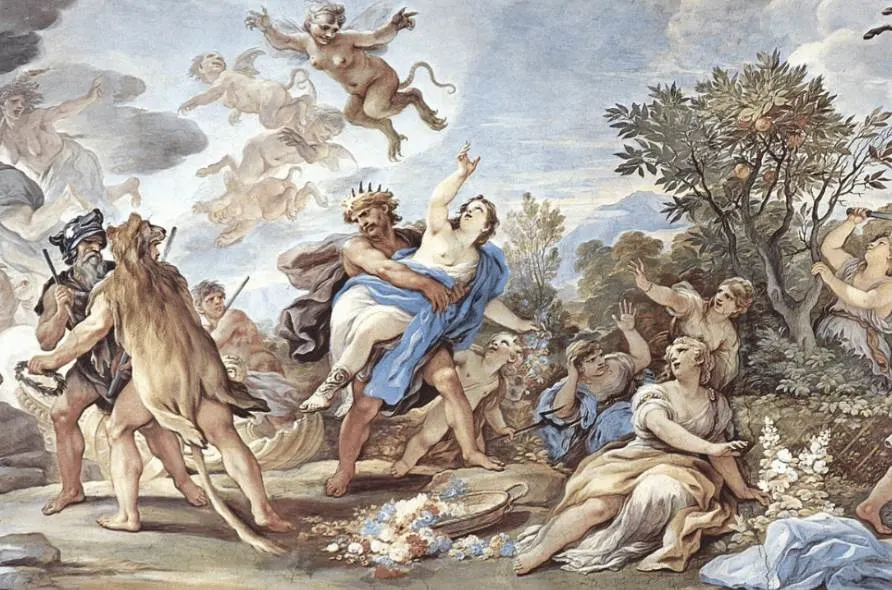
6. Nero was once the bride as well
If you think Nero’s behavior was a bit odd when he ordered a young boy to be castrated to become his wife, then you will surely be astounded by this peculiar story.
On another occasion, Nero appears to have married one of his richest freedman named “Pythagoras.” The same thing happened with Sporus regarding the wedding ceremony, except that this time Nero appeared to have been the bride!
One of Nero’s biographers wrote about this incident:
He stooped to marry himself to one of that filthy herd, by name Pythagoras, with all the forms of regular wedlock. The bridal veil was put over the emperor; people saw the witnesses of the ceremony, the wedding dower, the couch, and the nuptial torches; everything in a word was plainly visible, which, even when a woman weds darkness hides.
Referring to Nero’s marriage to Pythagoras.
By the second half of the 60s, Nero became increasingly unpopular with the people, the Senate, and the Army because of his peculiar behavior and acts. According to himself, he was just a misunderstood artist.
7. He blamed Christians for the Great Fire of Rome
On the night of July 18 and 19, 64 A.D., the Great Fire of Rome erupted in an area on the Aventine Hill, one of Rome’s 7 hills, overlooking the Circus Maximus.
It destroyed 3 of the 14 Roman neighborhoods and severely damaged 7 others. Palatine Hill was severely hit and a lot of residences, villas, and temples were destroyed in the fire.
There’s only one historian, Tacitus, who was uncertain about Nero’s involvement in the fire and simply wrote that he was “unsure.” All other historians are firm in their belief that Nero set things up and arranged the fire.
This remains a point of debate as Nero certainly wasn’t in Rome but Antium the moment the fire started.
So what were his possible reasons?
Because he didn’t like the city’s ancient construction and wanted to build a massive mansion referred to as “The Golden House” (Domus Aurea) for himself. This would have included a 30-meter-high bronze statue of Emperor Nero as well. He simply wasn’t the humble type.
Obviously, to avoid suspicion on himself, he had to find a scapegoat, and the Christians, who were considered to be a dangerous cult and were disliked by the average Roman citizen, were the perfect target.
In the aftermath of the fire, a lot of Christians were arrested, tortured, and publicly executed at the order of the emperor. They were thrown to the beasts in the arenas, crucified, and used as torches to light his garden.
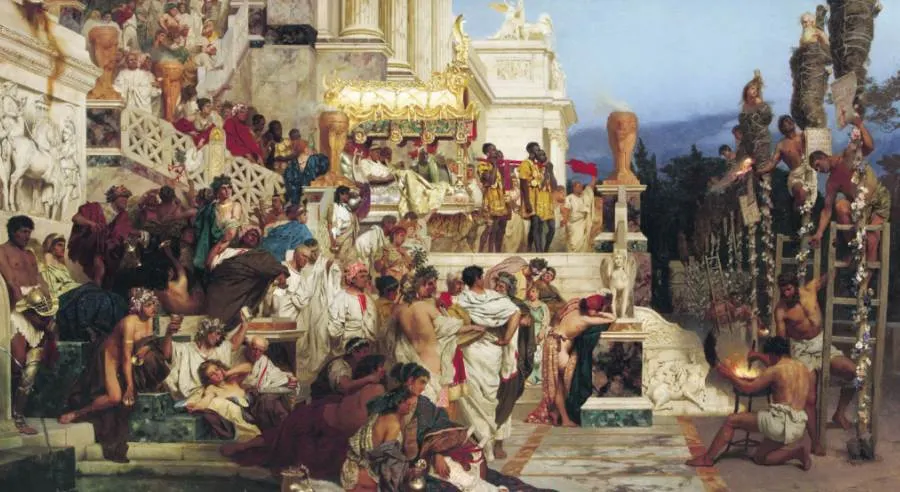
8. Nero didn’t play the fiddle when Rome burned down
Nero certainly didn’t do anything to avoid being suspected of starting the fire. His behavior was very weird, and historians Cassius Dio and Suetonius claimed that he sang the “Sack of Ilium” while performing in a play costume.
This contradicts his behavior shortly after the fire though, when he opened up his palace for the homeless and created a plan to set up relief efforts.
But then again, these efforts happened after he was being accused of setting up the fire and when his evil plan to make space for his immense Golden House had already succeeded.
One thing is certain, and that is that as opposed to the popular legend, he definitely didn’t play the fiddle as Rome was burning as this instrument was only invented 1,400 years after Nero’s death.
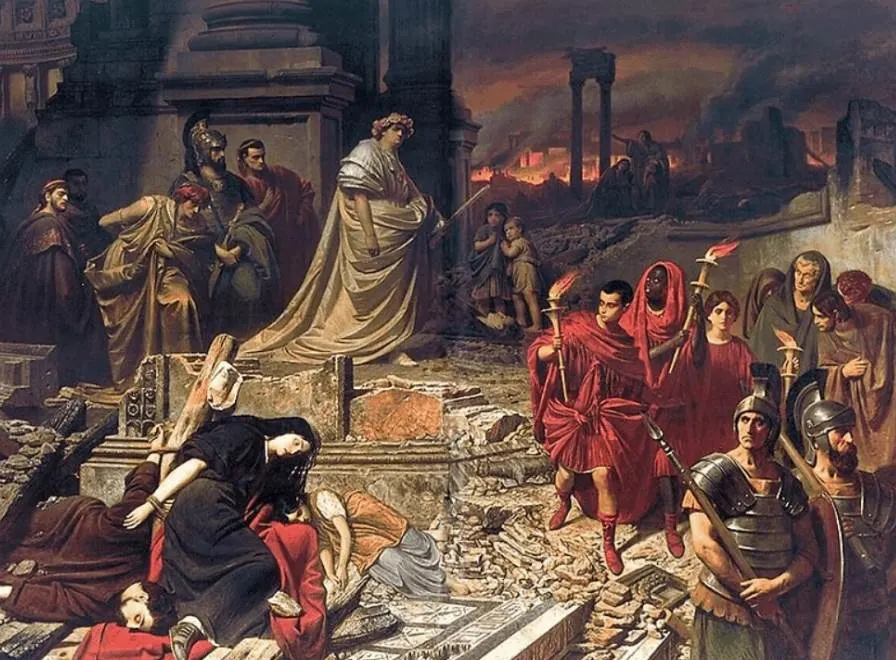
9. These were Nero’s last words
After the Great Fire, Nero’s policy was to increase taxes to fund the rebuilding of Rome, including his immense Golden House which would have covered 1/3 of the city of Rome at that time.
This didn’t go too well and a lot of conspiracies to end his life were undertaken and a major one including future Emperor Galba, the first of the 4 emperors after Nero’s death, grew out of Nero’s control.
He fled Rome to a villa about 6.4 kilometers (4 miles) outside of the city of Rome, together with 4 of his loyal freedmen (including his “wife” Sporus).
When his location was found out, a messenger came with the message that Nero was sentenced to death, and would be executed by being beaten to death. Armed men would come and bring him to the Roman Forum to conduct the public execution.
This turned out to be untrue, though, as the Senate was very reluctant to publicly execute the “deified Nero of the Julio-Claudian Dynasty,” something Nero obviously wasn’t aware of at the time.
He prepared himself for suicide and paced up and down saying the words “Qualis Artifex pereo” (“What an artist dies in me“), which emphasized the fact that Nero saw himself as an amazing artist.
He wasn’t quite ready yet and asked one of his friends to kill himself first, you know, to see what happens.
When the horseman approached, it drove him to finally take the plunge. he wasn’t able to do it himself though so he forced his private secretary, Epaphroditus, to perform the task.
Nero’s veins were cut and he slowly bled to death. When the horsemen arrived, they actually tried to save his life, but to no avail, he went down uttering his final words:
Too late! This is fidelity!
Nero’s last words.

10. Nero was born again multiple times
Whether or not all the stories about Nero are true remains uncertain. After all, the historians who wrote about him were his adversaries, not his friends, and it’s possible that the saying “history is written by the winners” might apply here.
That being said, it’s clear that something was off with Nero, as he portrayed the most peculiar behavior imaginable during his 13 years at the head of the most powerful empire in the world at that time.
That being said, one of the most remarkable facts about Nero is that after his death, a legend arose that he would be reborn and come again to rule over Rome. His populist nature clearly left a mark on the lower classes of Roman society.
This is emphasized by the fact that at least three Nero imposters emerged leading rebellions in the years following his death and the legend that Nero would return stayed alive until at least the 5th century.
Should we take everything with a grain of salt?
Probably not, but it’s worth pointing out that not everything regarding Nero was negative, even though he most certainly was a cruel and malignant character.

